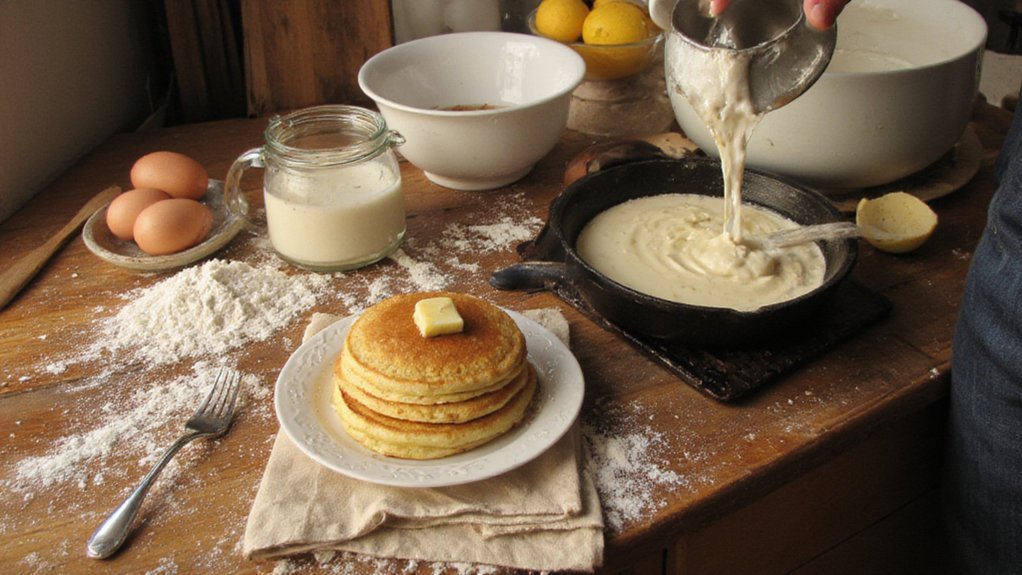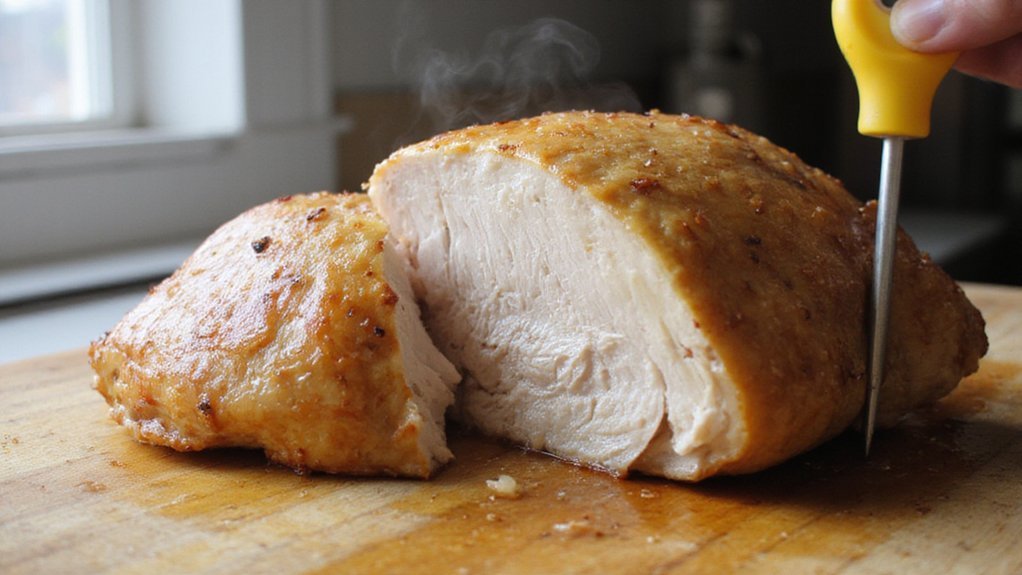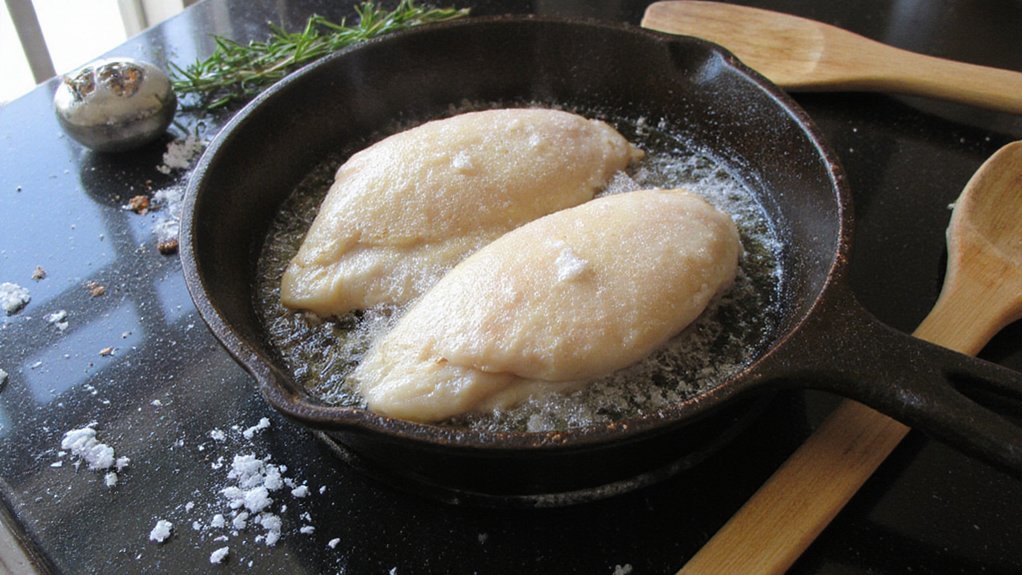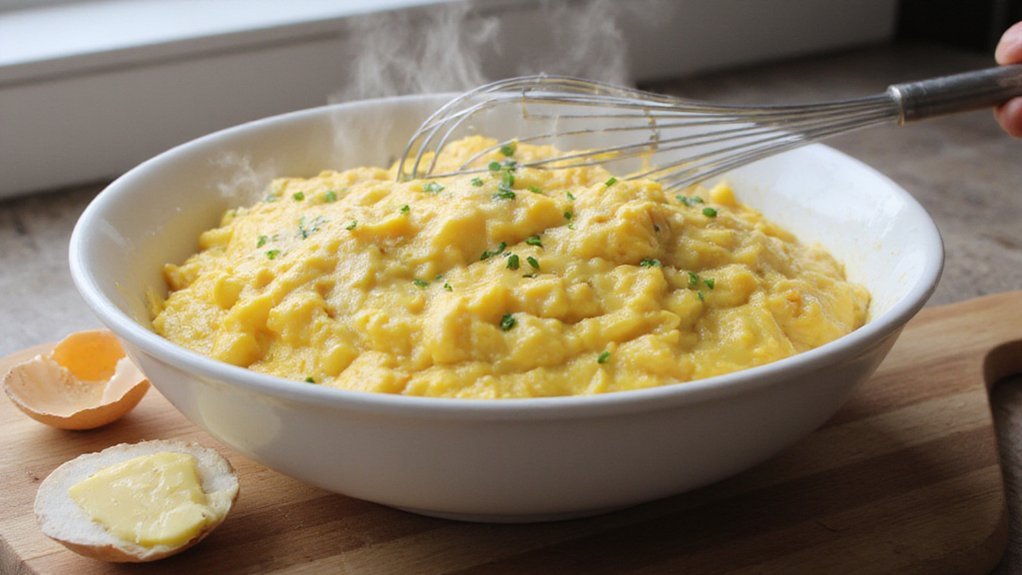You’ll sift 1½ cups all‑purpose flour with 3½ tsp baking powder, 1 tsp salt and 1 tbsp sugar, then whisk 1¼ cups room‑temperature milk, 1 large egg and 3 tbsp melted butter; fold wet into dry, rest 5–10 minutes, and preheat a skillet to medium (175–190°C/350–375°F) — but batter viscosity, resting time and pan temperature alter the result, so keep going for precise cues and fixes.
Key Takeaways
- Measure 1 1/2 cups flour, 3 1/2 tsp baking powder, 1 tsp salt, 1 tbsp sugar, 1 1/4 cups milk, 1 egg, 3 tbsp melted butter.
- Sift dry ingredients, whisk wet separately, then fold gently into dry until just combined with small lumps.
- Let batter rest 5–10 minutes to hydrate and activate leavening before cooking.
- Preheat skillet to 325–350°F (160–175°C), oil lightly, pour ¼-cup portions, flip when edges set and bubbles form.
- Adjust batter thickness, fresh baking powder, and skillet heat to fix flat, pale, or dense pancakes.
Ingredients and Equipment
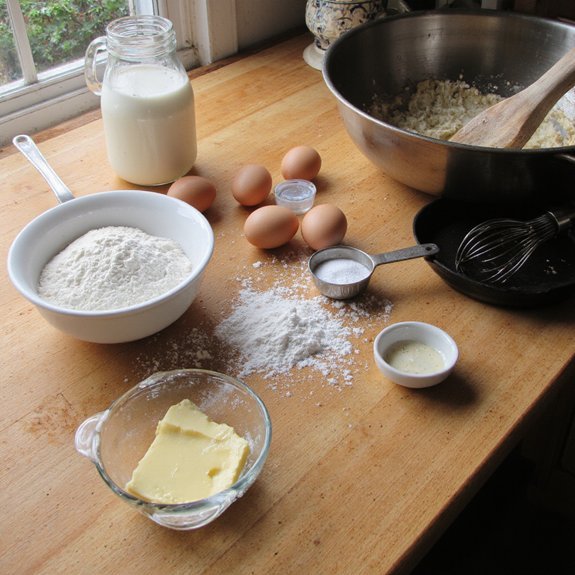
You’ll need precise ingredients and the right tools: measure 1 1/2 cups (190 g) all-purpose flour, 3 1/2 teaspoons (14 g) baking powder, 1 teaspoon (5 g) fine salt, 1 tablespoon (12 g) granulated sugar, 1 1/4 cups (300 ml) whole milk, 1 large egg, and 3 tablespoons (45 g) melted unsalted butter. Keep ingredients scaled, room temperature; weigh solids for reproducibility. Assemble essential equipment: scale, dry and liquid measuring cups, whisk, fine-mesh sieve, nonstick skillet or cast-iron griddle, thermometer. Prioritize technique: sift flour and leavening to aerate, temper cold liquids to avoid gluten tightening, preheat pan to 190–200°C for even browning, and dot butter on surface to control fat distribution. For innovation, consider alternative milks, cultured dairy, or clarified butter—note hydration and flavor shifts. Store dry mix airtight with desiccant; label ratios for iteration. This list keeps your pancake ingredients, essential equipment optimized for reproducible, inventive results.
Mixing the Basic Batter
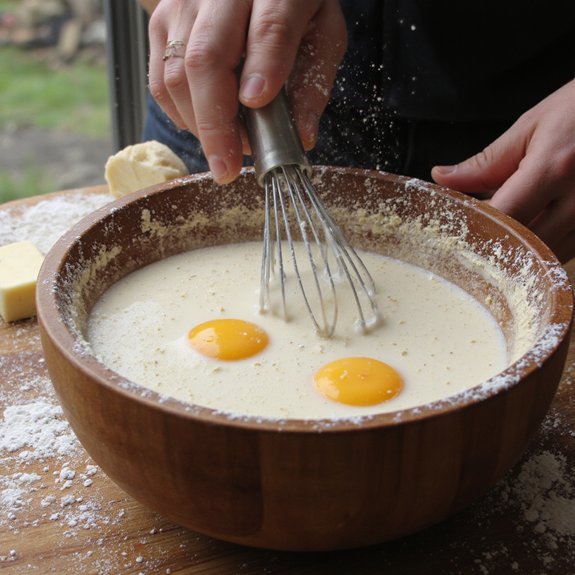
When combining the sifted dry mix (1 1/2 cups/190 g flour, 3 1/2 tsp/14 g baking powder, 1 tsp/5 g salt, 1 tbsp/12 g sugar), make a shallow well in the center and whisk together 1 1/4 cups (300 ml) whole milk, 1 large egg and 3 tbsp (45 g) melted unsalted butter; if the milk is cold, temper it with a tablespoon of warm butter mixture to avoid tightening the batter. Use a flexible spatula and a whisk: whisk wet components, then fold into dry with even strokes. Aim for homogenous batter with small lumps — overmixing develops gluten and yields toughness. Adjust batter consistency incrementally: add 1 tbsp water or milk to loosen, 1 tbsp flour to thicken. Employ reverse-folding and minimal strokes for aeration and structure. Taste and rest the batter 5–10 minutes to hydrate and activate leavening. These mixing techniques prioritize texture and innovation.
Cooking: Pan, Temperature, and Timing
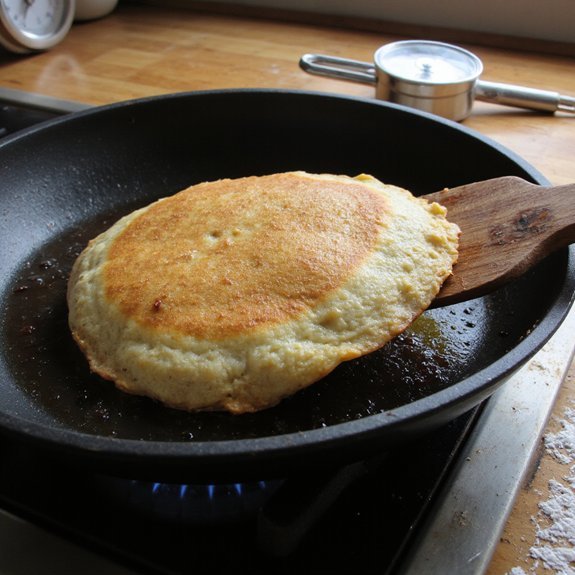
Let the rested batter sit while you prepare the pan and heat: a 10‑inch (25 cm) cast‑iron or heavy‑gauge nonstick skillet gives the most even browning. Preheat over medium (325–350°F/160–175°C) until a drop of water dances; wipe with a thin film (½ tsp) of neutral oil or melted butter. Use a ¼‑cup (60 ml) scoop for uniform discs. Pour, then reduce heat to medium-low (300°F/150°C) to maintain a steady crepe-like sizzle without burning. Flip when edges set and bubbles on surface reach ⅔ cooked; total cook time per side: 90–120 seconds first side, 30–45 seconds second side for ¾‑inch (18–20 mm) pancakes. Alternate with a warm oven set to 200°F (95°C) to hold. Explore pan types, cooking techniques, and layering flavors: try seasoned carbon steel for thin, lacy pancakes or nonstick for high-ratio batters. Keep timing consistent, adjust by 25°F/15°C increments for altitude or sugar content. And texture.
Troubleshooting Common Pancake Problems
Five quick diagnostics pinpoint the root cause: batter viscosity, leavening freshness, pan temperature, mixing technique, and portion size. Check batter viscosity: aim for 120–140 g per 250 ml milk; too thin yields spread pancakes, too stiff resists lift. Verify baking powder age; 1 teaspoon per 125 g flour must be fresh. Use a skillet at 175–190°C; adjust cooking temperature for color and interior cook. Avoid overmixing batter—fold until just combined to preserve air. Portion batter with a 60 ml measure for uniform thickness.
| Issue | Fix |
|---|---|
| Pale, flat | Raise to 180°C; check leavening |
| Tough crumb | Reduce mixing; rest 10 min |
| Burnt exterior | Lower to 170°C |
| Uneven holes | Consistent 60 ml pours |
Use precise technique: weigh ingredients, control heat, and iterate. If you still see issues, document variables—flour brand, altitude, oil type, pan material, and resting time—then change one parameter per batch and record outcomes for optimized refinement each trial.
Flavor Variations and Serving Suggestions
Start by choosing a flavor direction and apply technique-level adjustments: for vanilla-addition fold 1 tsp pure vanilla extract or the scraped seeds of 1 vanilla bean into 250 g batter; for citrus zest, grate 1 lemon or orange and fold gently to preserve aeration; for chocolate, sift 30–40 g unsweetened cocoa into the dry mix and increase sugar by 10–15 g; for fruit, macerate 100–150 g berries with 10–15 g sugar for 10 minutes and fold in just before portioning to avoid sogginess; for spice, toast and grind whole spices (1–2 g) and add to dry ingredients. Then you’ll choose mix ins options—30 g chocolate chips, 30 g chopped nuts, or 50 g diced apple—and fold lightly once to retain lift. For serving, use warm fruit toppings, cultured butter, and hot flavored syrups. Accent with spice additions: 0.5 g cinnamon or 0.2 g cardamom; finish with a squeeze.
